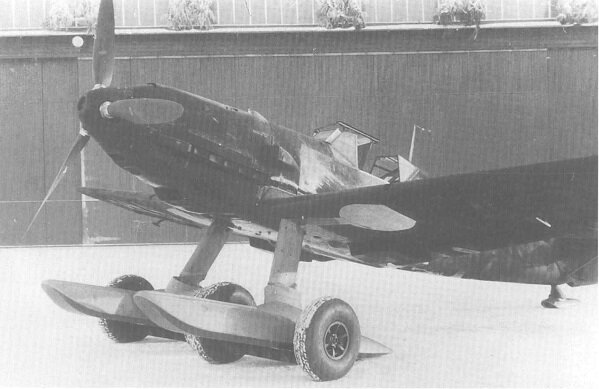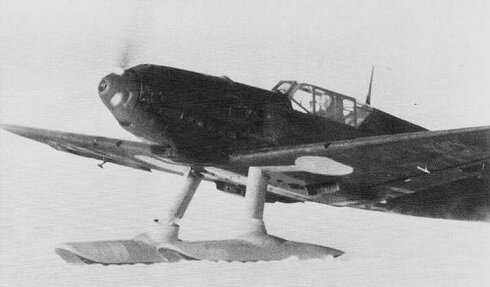- Joined
- 11 June 2014
- Messages
- 1,542
- Reaction score
- 2,902
The part about the Me 110 with Aurol fuel additives was a secondary theme in this document. It
should give the 110 better climbing speed after dropping the bomb load, but wasn't regarded
as really worthwhile by Willy, because it would need too much Aurol to bring apprecciable
improvements.
Seems to me, that the aim was a Me 109 as a fighter bomber with superior performance, compared to
allied aircraft, as it is mentioned explicitely, that ".. for such an aircraft even climbing speed and ceiling
after dropping the bombload would be sufficient, if armament would be reduced.
It should get smaller wings and jettisonable wheels for taxying, for landing it would have an retractable
skid. As the next step, even smaller wings are mentioned, necessitating, that the aircraft would be launched
via a catapult and "landed" via a big (!) parachute. Those modifications were regarded as necessary, to provide
"at least a small number" of aircraft, highly superior to the allies.
This seems like a newly discovered Bf 109 project to me! Unless anyone else has ever heard of anything like this?
I do not read German. But based on the translation, I think GTX is correct. This sounds just like the Hu136. It is hard to see how anything remotely related to a Bf109 could have these characteristics.
As far as we know, Messerschmitt had no involvement with the Hü 136. As I've mentioned elsewhere, there were certainly numerous project designs which simply have not survived to the present day and this would appear to be one of them. To take one example, four different layouts were considered by Focke-Wulf before the company settled on what became the Fw 159. Presumably back in the early 1930s there were several designs studied before the Bf 109's layout was chosen but as far as I know we're not aware of what they were.


